Gamers and geeks love overclocking their CPUs and RAMs to get the highest performance. Like them, maybe you are looking for a reliable way to overclock your unlocked CPU. Just go to the BIOS and push the processor to the limit by unlocking the GHz.
It’s totally fine if you don’t know how to get to the BIOS settings in your Windows 11.
Relax! You don’t need to be a pro or geek to go to the Windows 11’s BIOS settings. I will show you all the easiest ways to get you to the BIOS.
Just read till the end and go through every step. Then only one thought will come to your mind, Dude, it was that easy!
So, get a cup of coffee and sit tight. Let’s begin!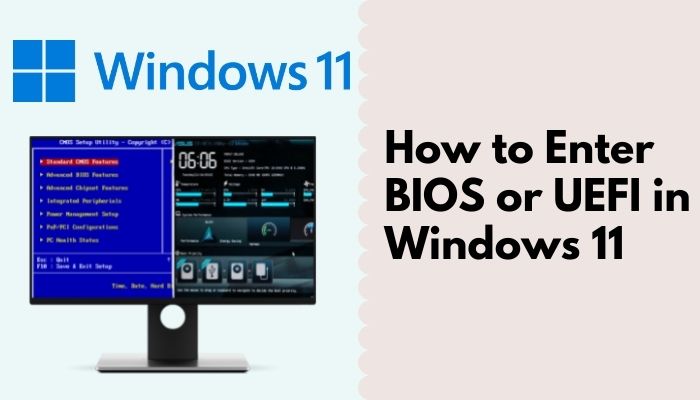
Check out our separate post Can you Flash BIOS with CPU Installed
Why Do You Need to Go to BIOS or UEFI?
You need to go to the motherboards BIOS settings to change the motherboard system settings, change VRM power control, or turn on the VT-X to use the intel’s virtualization technology. Overclocking the CPU and RAM by tweaking the voltage or changing the boot order, BIOS is the only option.
BIOS stands for Basic Input and Output System. It’s firmware and stored inside a small memory chip on the motherboard. BIOS is responsible for the POST, and it’s the first software your PC goes through while starting up.
BIOS is programmed with a low-level programming language to interpret the hardware. It communicates with all the hardware that is installed into your system.
In Windows 10 or 11, you might want to change your RAM voltage or the boot order after installing a new storage device. Going to the BIOS is a must to change all the settings.
How to Go to BIOS in Windows 11
There are many ways to go to the BIOS settings in Windows 11. But the most popular way to enter the BIOS settings is to keep pressing a specific key on your keyboard while booting up the computer. Different motherboard manufacturers set different keys for the BIOS menu. You will find the key while booting up on the splash screen.
Here are the BIOS settings keys for different motherboards manufacturers:
| Manufacturers | Keys |
|---|---|
| MSI, EVGA, GIGABYTE, BIOSTAR, ZOTAC | Del |
| SAMSUNG, TOSHIBA, INTEL | F2 |
| MICROSOFT SURFACE | Press and hold the volume up button |
| HP | F10 |
| DELL | F2 or F12 |
| ASUS | F9, F10, or Del |
| ACER | F2 or Del |
| LENOVO | F2, Fn + F1, or F1 |
Hence, there are other effective methods to go the BIOS. Let me show them too.
Read more on how to Fix Windows 11 Install Error 0x800f0922
Here are the methods to access the BIOS settings:
1. Through settings in Windows 11
You can go to the BIOS settings in Windows 11 from the Windows settings. It’s so easy and takes a few minutes to get there.
Here are the steps to enter the BIOS from Windows 11 settings:
- Go to the Windows Settings and click on the System option.
- Scroll down and click on the Recovery option.
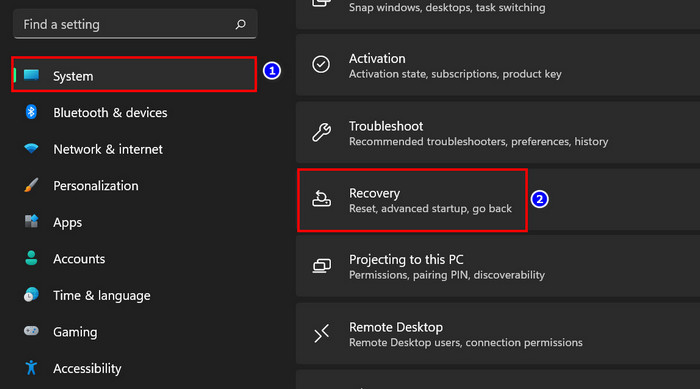
- Click on the Restart option from the Advanced Startup menu.
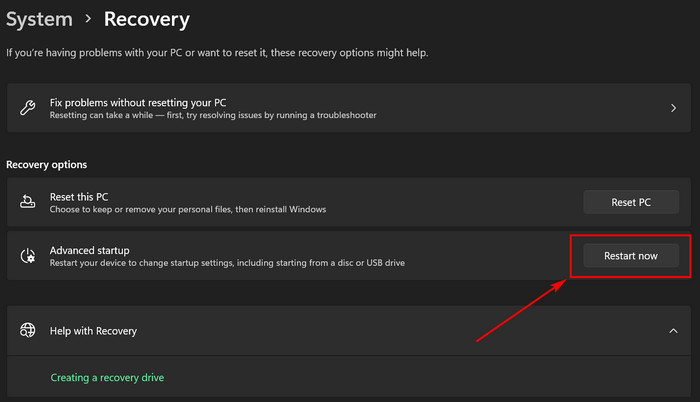
- Go to Troubleshoot > Advanced option > UEFI Firmware Settings and then press Restart.
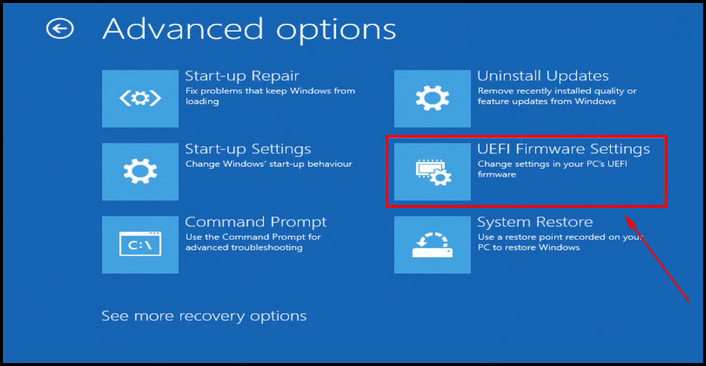
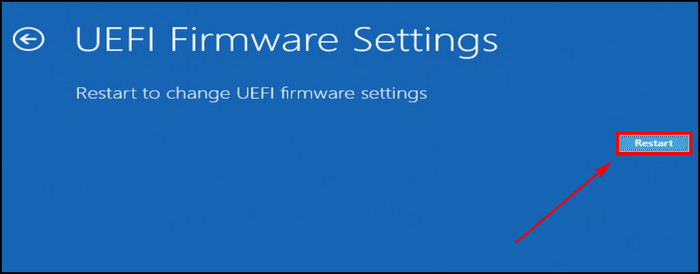
You can go to the BIOS settings from your Windows 11 OS by following the above steps. It’s a quick way to get there from the Windows settings. Let’s take a look at the other method.
2. Enter Windows 11 BIOS by Shift + Restart
This method is another quick way to get to the BIOS menu. It’s similar to the previous one, but there are some added steps. Don’t worry; you can enter the BIOS settings quickly by this method.
Here are the steps to enter the Windows 11 BIOS by pressing Shift + Restart:
- Press the Shift key + Power Button on the lock screen or sign-in screen after a restart. (instead of the power button, you can also click on the power option from the bottom right corner).
- Click on the Restart option after that.
- Choose Troubleshoot option from the Choose an option screen after a restart.
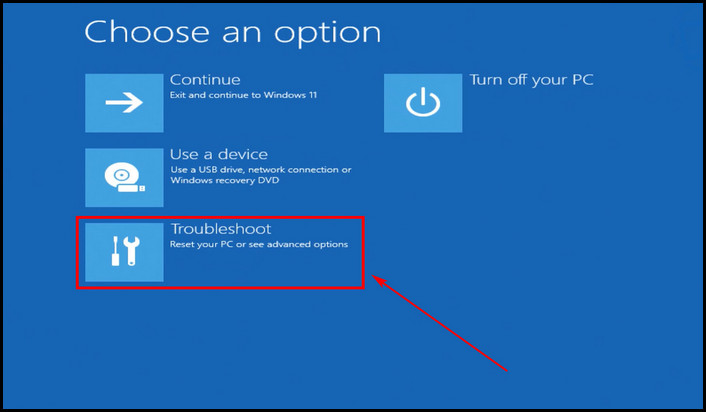
- Go to the Advance options > UEFI Firmware Settings and press Restart.
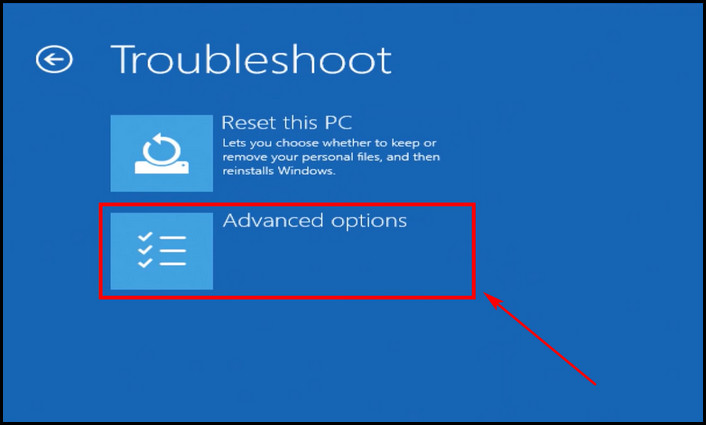
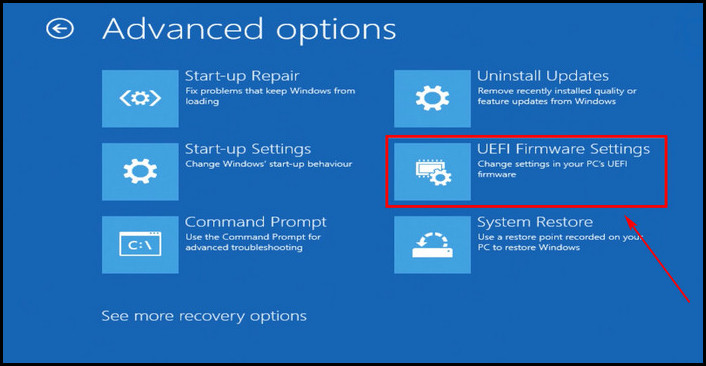
After a restart, you will be redirected to the BIOS or UEFI settings. It’s a tricky one but simple at the same time.
Quickly check out our epic guide on stop Apps running in background Windows 11.
3. Go to Win 11 BIOS from Windows RUN
With windows RUN, you can go wherever you want. Type a command line in RUN and hit Enter to accomplish any task. You can go to the BIOS settings from the RUN dialogue box too.
Here are the steps to Get into Win 11 BIOS from Windows RUN:
- Press Windows key + R to open the RUN dialogue box.
- Type in shutdown /r /o /f /t 00 and hit the Enter button on the keyboard. After that, your PC will restart.
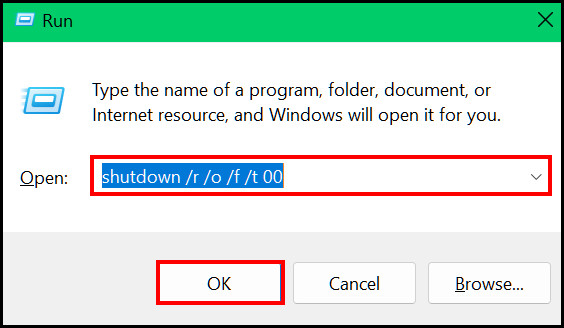
- Click on the Troubleshoot option from the Choose an option screen after a restart.

- Go to Advanced options > UEFI Firmware Settings, and press Restart.

The last steps are the same as the other methods. The RUN dialogue box is best for entering settings or accomplishing tasks. Just type the exact command for the task and hit the Enter button. You will see your task is running.
4. Go to Win 11 BIOS from CMD, Powershell, or Terminal
You can also go to the BIOS settings by typing the same command line in the Windows CMD, Powershell, or Terminal. All you need to do is open the CMD or Powershell with the administrative privilege and type shutdown /r /o /f /t 00. 
After a restart, you will be redirected to the Advanced Startup screen. Then go to Troubleshoot > Advanced option > UEFI Firmware Settings and press Restart. 
These steps will get you to the BIOS setting of your system. Now, you can change whatever you want in the settings.
Also read, enable nearby sharing on Windows 11.
5. Enter the Windows 11 BIOS Via a Shortcut
To do this, you will need to create a shortcut for going to the BIOS menu. The shortcut is another quick and simple way to get to the BIOS.
Here are the steps to enter the BIOS through a shortcut:
- Right-click anywhere on the desktop and then go to New > Shortcut.
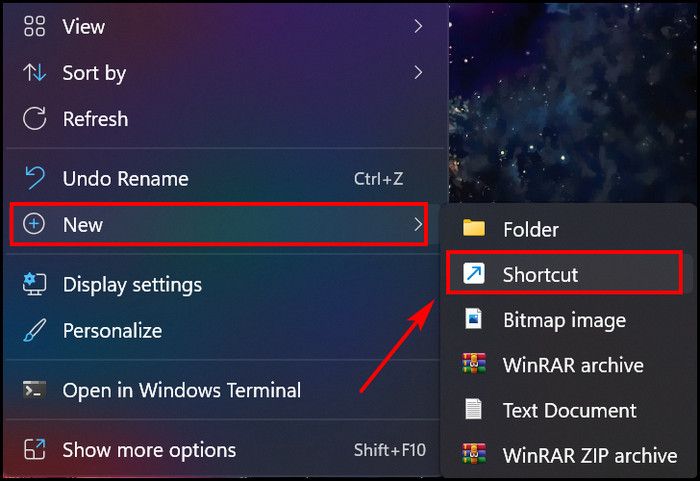
- Type in shutdown /r /o /f /t 00 in the create shortcut wizard window and name your shortcut.
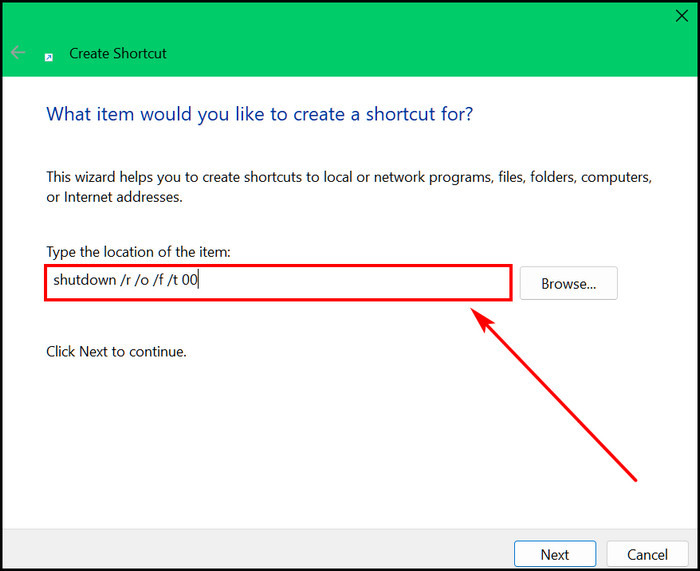
- Double click on the shortcut, and your PC will shut down immediately.
- Start your PC again, and you will be booted into the Windows Recovery Environment.
- Go to the Troubleshoot > Advanced option > UEFI Firmware Settings.

- Click on the Restart. After restarting the system, you will see the BIOS

These methods are so simple and easy that you can go to the BIOS by following those steps in no time. I have tested every method, and each of them works perfectly. Now, it’s your turn to try them and find out which one is the fastest for you.
Follow our guide to fix your PIN is no longer available on Windows 11.
FAQs
Does Windows 11 support Legacy BIOS?
No, Windows 11 doesn’t support Legacy BIOS. Windows 11 is only for 64-bit supported systems, but Legacy BIOS is for older operating systems based on 32-bit or others. You must choose EFI bios boot mode to install Win 11 in a system.
How to go to the BIOS menu from an ASUS motherboard?
To enter the BIOS settings from an ASUS mobo, you should keep pressing the F2 button while booting up or startup. You can also try the Del button instead of the F2 button. Both work perfectly on an ASUS motherboard.
Why does Windows 11 require UEFI boot?
Microsoft is securing Windows 11 from every possible threat. That’s why Windows 11 only supports UEFI boot mode because UEFI mode offers much better and enhanced security than Legacy boot mode.
Wrapping Up
I hope you have read till the end and gone through every step. Though BIOS settings are such sensitive things to deal with, you better know what type of changes you are making.
A simple change in the BIOS settings can cause chaos in the system. Your PC won’t start for a wrong change in the BIOS settings. So, try to be extra cautious when altering the default settings.
All the methods are 100% working. Moreover, if you find any method that is not working, let me know. Keep exploring in depth to be an expert. Peace out!




